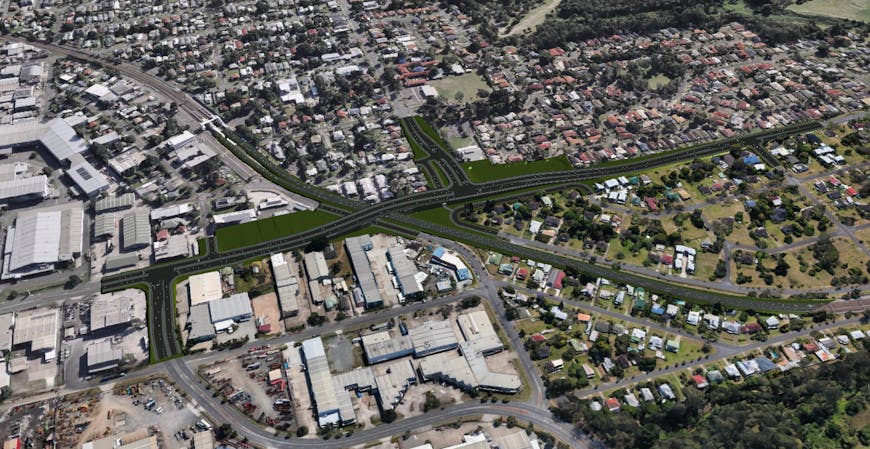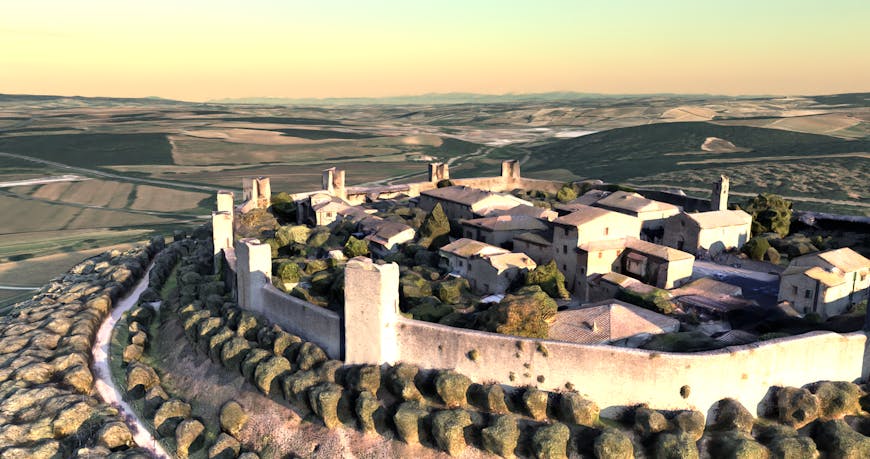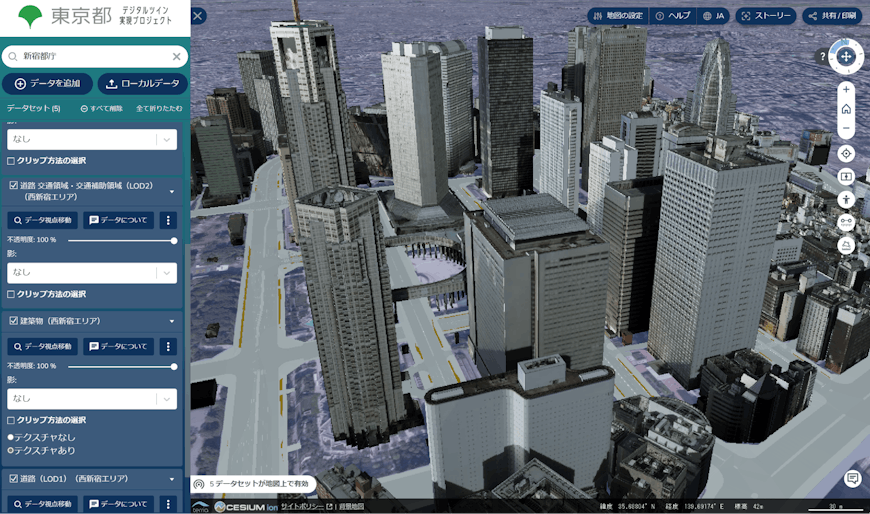Cesium Releases in May 2024
In April, we reopened applications for Cesium Ecosystem Grants, shared the continuation of our work with Maxar Intelligence on the US Army’s One World Terrain contract, announced Cesium ion’s Sketchfab integration, and recapped our time at NVIDIA GTC 2024. The team will be at GEOINT Symposium next week—meet us in BOOTH 1831.

Sketchfab assets available in Cesium ion: Singapore's famous Helix Bridge is placed across the Schuylkill River in Philadelphia, Pennsylvania, USA, and visualized with Unreal Engine. Google Photorealistic 3D Tiles provide broader geospatial context. Sketchfab model: Helix Bridge by Sengchor with CC Attribution.
We made improvements across Cesium this month. To get notifications about our monthly releases, you can subscribe to the Cesium release roundup thread on our community forum.
CesiumJS 1.117 Release
CesiumJS 1.117 is now available. Highlights of the release include:
- Added
ClippingPolygonandClippingPolygonCollectionfor applying multiple clipping regions, with support for concave regions and inverse clipping regions, to 3D Tiles and Terrain. #11750 - Fixed a bug that Label position height may not be correctly updated when its HeightReference is relative. #11929
- Fixed a bug where a data source was not automatically rendered after it was added in request render mode. #11934
For more details, see the changelog.

A roadway design model outside of Brisbane, Australia, inset into Google Photorealistic 3D Tiles using a clipping polygon in CesiumJS.
Cesium for Unreal 2.5.0 Release
Cesium for Unreal v2.5.0 is now available. Highlights of the release include:
- Added support for Unreal Engine 5.4.
- Added support for Cesium ion servers in single user mode. Tokens are not required to stream assets from such servers.
- Fixed an issue where tilesets would render completely black on Quest headsets and some iOS devices.
- Fixed a crash on Unreal Editor shutdown that would occasionally happen due to attempts to access garbage-collected static classes.
Check the Cesium for Unreal release and the Cesium for Unreal Samples release for the full list of updates.
Cesium for Unity 1.10.0 Release
Cesium for Unity v1.10.0 is now available. Highlights of this release include:
- Added support for Cesium ion servers in single user mode. Tokens are not required to stream assets from such servers.
- Fixed a bug where
CesiumCreditSystemwould delete itself from its scene when other additive scenes were unloaded.
In addition to the above, this release updates cesium-native from v0.34.0 to v0.35.0. See the changelog for a complete list of changes in cesium-native.
Check the Cesium for Unity changelog for the full list of updates, and follow our Cesium for Unity tutorials to get started.
Cesium for Omniverse 0.20.0 Release
Cesium for Omniverse v0.20.0 is now available. Highlights of this release include:
- Fixed missing button for adding imagery from Asset UI.
- Updated cesium-native, which includes a bug fix for reading GLB files with extra padding bytes.
See the changelog for the full list of updates, and get started with our Cesium for Omniverse tutorials.

Sketchfab model of Monteriggioni imported via Cesium ion, placed on Cesium World Terrain with Bing Imagery, and visualized with Cesium for Omniverse. Sketchfab model: Monteriggioni: HIGH quality by omnidirectional with CC Attribution.
Cesium ion Updates
You can now import 3D models from Sketchfab into Cesium ion to create 3D Tiles, making it easier to create context and content for geospatial experiences. Details are here.
Cesium’s 3D Tiling Pipeline v4.7.1 is now available and includes Point Cloud Tiler fixes:
- When reading from LAZ files, it now correctly uses the extended data fields for classification and point_source_id. Previously this resulted in these fields being zero in some cases.
- Fixed bitmask for legacy point data records' classification field. Could result in incorrect values.
Cesium ion Self-Hosted v1.1 was released and is available for download by licensed customers. This is a maintenance release. View the changelog for details.
Powered by Cesium
In April we highlighted how the Tokyo Metropolitan Digital Twin 3D Viewer uses Cesium to improve residents’ quality of life. Several types of data, including 3D city models, 3D point cloud data within the city, location information of Tokyo Metropolitan buses, river data, 2D data, and videos, are combined in one portal, aiding city planning and disaster prevention. CesiumJS and Cesium ion are utilized as the visualization infrastructure for that 3D viewer.
Written by our community manager in Japan, the story appears first in Japanese, followed by English.

Tokyo Metropolitan Digital Twin 3D Viewer. Courtesy Tokyo Metropolitan Government.